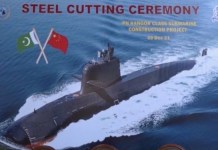Thursday’s crash of the Indian Navy’s MiG-29K trainer aircraft in the Arabian Sea has once again revived the debate whether the country should replace the Russian-made jets with a new carrier-based fighter like the Rafale or the F/A-18 Super Hornet.
While one pilot safely ejected himself from the aircraft and was rescued, a search operation is still on for the second pilot. According to a statement released by the Indian Navy, “A MiG-29K trainer aircraft of Indian Navy operating at sea ditched at about 1700 hrs on 26 Nov 20. One pilot has been recovered and searches by air and surface units are in progress for the second pilot. An inquiry has been ordered.”
This is the third such crash of an Indian MiG-29K in a year and questions have been raised over the serviceability of the aircraft. According to experts, only one-third of a fleet of 45 aircraft remains in operation due to serviceability issues.
With MiG-29K the choice of aircraft for both the aircraft carriers — INS Vikramaditya and an under-construction carrier, the incident has pushed the Indian Navy into evaluating if the American F/A-18 Hornets or the French-made Rafale naval fighters are the correct replacements.
India has already announced its plans to explore other carrier-based fighter jets that can support the existing fleet of MiG-29Ks and Boeing’s F/A-18s & French-Rafales are hot contenders.
The possibility of the Hornets entering service with the Indian Navy has been floated for some time with the country looking to procuring 57 naval fighters for operations from the carriers.
“This past summer Boeing utilized a ground-based ski jump at Naval Air Station Patuxent River in Maryland to demonstrate the capabilities of the F/A-18E/F Super Hornet on a short take-off but arrested recovery (STOBAR) configured aircraft carrier, such as the ones currently in service with the Indian Navy,” Peter Suciu, wrote in The National Interest.
Washington and New Delhi recently signed the BECA that would allow India to use US geospatial maps to get pinpoint military accuracy of automated hardware systems and weapons such as cruise and ballistic missiles. Following this, India was offered the advanced version of the Hornet along with the Sea Guardian drones by the US.
The Boeing F/A-18 Super Hornet
The twin-engine, multirole, carrier-capable Boeing F/A-18 Super Hornet fighter is a variant of the McDonnell Douglas F/A-18 Hornet. According to Boeing, the Hornet has earned a reputation of being among the most lethal, advanced, combat-proven, multi-role frontline fighters in service today.
The Super Hornet possesses the ability to carry air-to-air missiles as well as air-to-surface weapons. It has an internal 20mm M61 rotary cannon that helps it to carry the missiles.

While the MiG-29 trumps most fighters in terms of speed of 1519 miles per hour, it has a lowered unrefueled range of 889 miles as compared to the baseline Super Hornets, which have an unrefueled range of 1243 miles.
Moreover, according to experts, the Hornets also offer better situational awareness for the pilot — a key factor in combat.
According to Boeing Defense India (BDI), “The Block III variant can perform in virtually every mission in the tactical spectrum including air superiority, day/night strike with precision guided-weapons, fighter escort, close air support, suppression of enemy air defense, maritime strike, reconnaissance, forward air control, and buddy refueling.”
The French Rafale
Another alternative for the Indian Navy is the French Rafale, with which the country is very well acquainted, having acquired the fighters for the country’s Air Force.
The twin-jet fighter possesses the ability to operate from both an aircraft carrier and a shore base, making it a hot contender in the race along with F-18 Super Hornets.
Having entered service with the French Navy in 2004 and its Air Force two years later, the aircraft has over 30,000 flight hours in operations. Besides, it has an impressive combat history that includes its deployment in the conflict zones of Afghanistan, Libya, Mali, Iraq, and Syria.
According to Dassault Aviation, “The fully versatile Rafale is able to carry out all combat aviation missions: air superiority and air defense, close air support, in-depth strikes, reconnaissance, anti-ship strikes, and nuclear deterrence.”
The French Navy had earlier stressed how the Rafale fighters would be suitable for the Indian Navy and can be easily integrated into the aircraft carrier under construction at Cochin Shipyard.
“We have used the aircraft carrier in the fight against ISIS and have used sophisticated armaments from the Rafale that demonstrates that it works very well,” said Rear Admiral Gilles Boidevezi, in charge of foreign relations for the French Navy.





